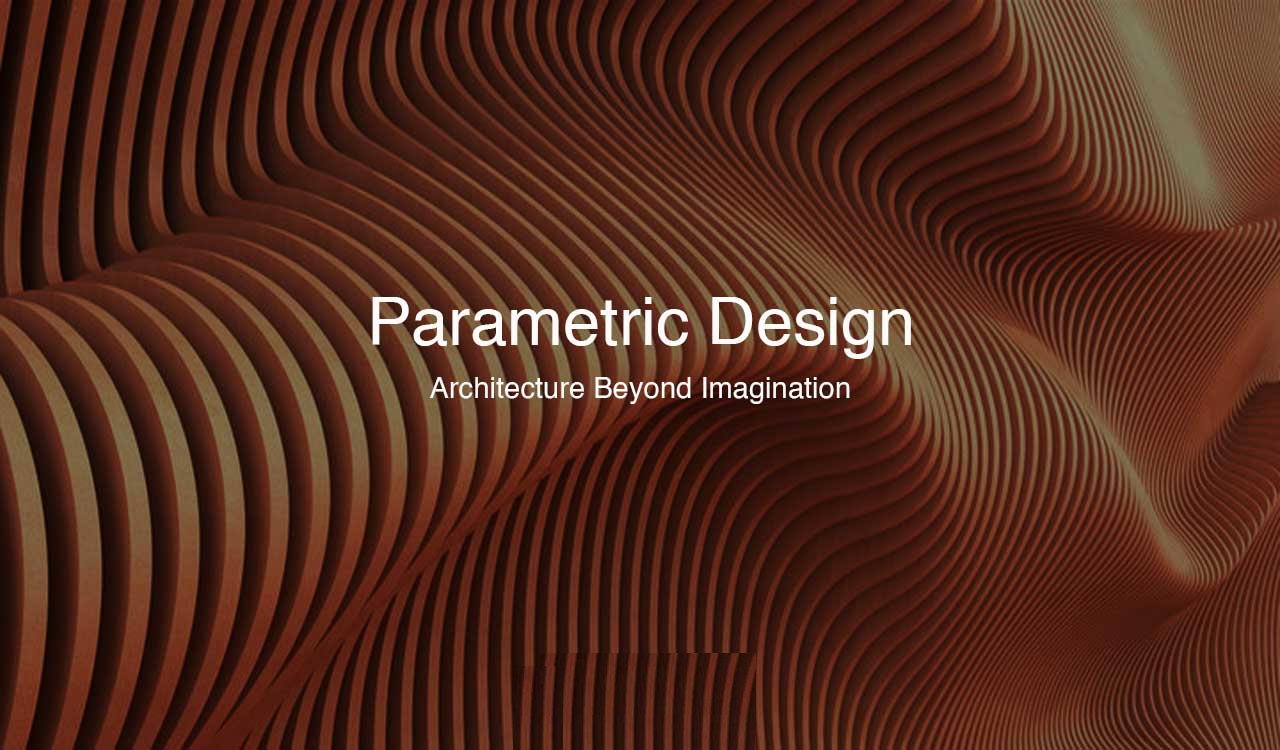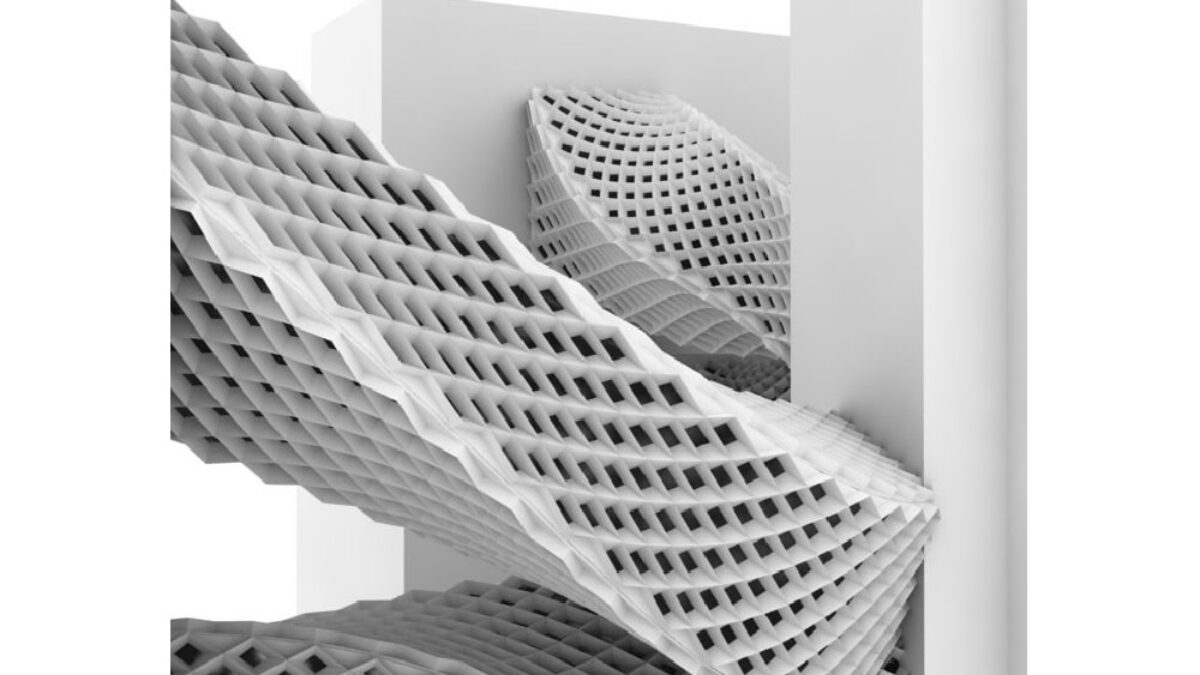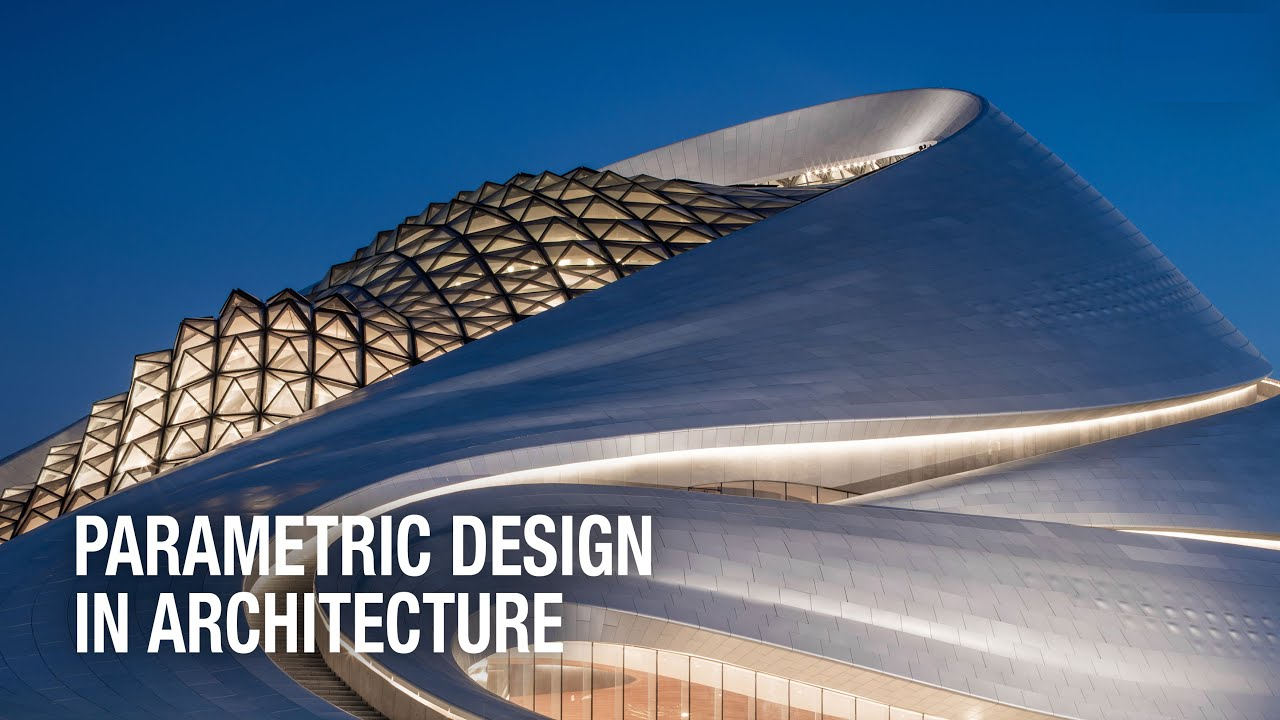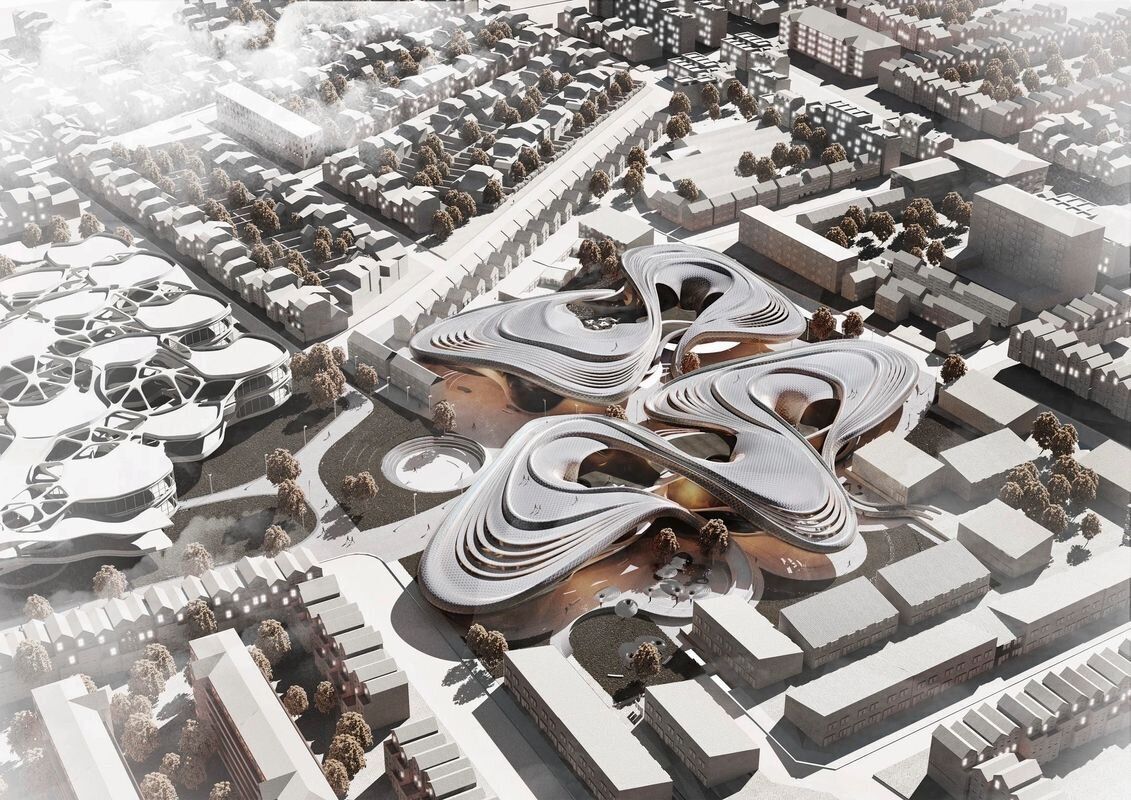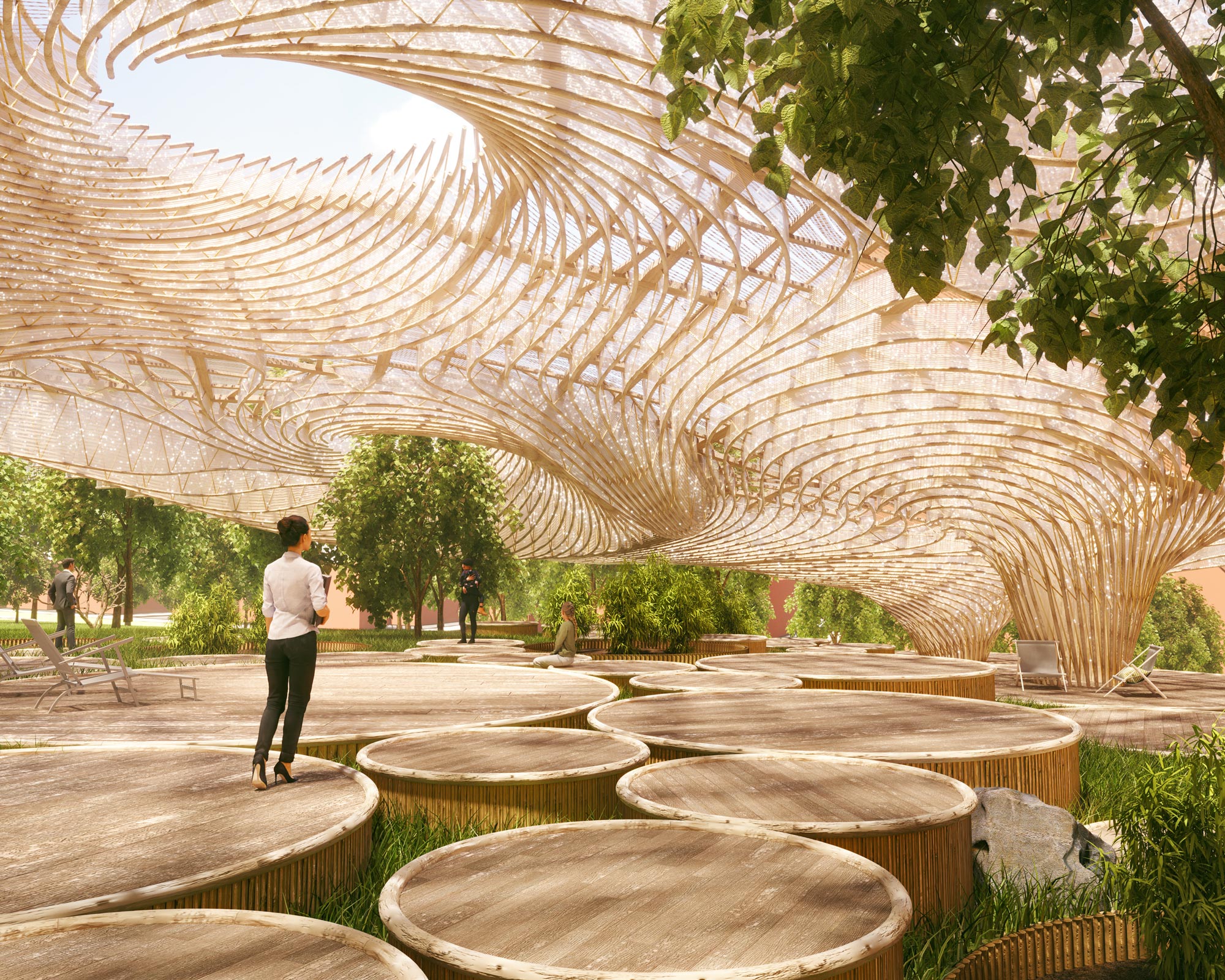
Unlike the static, predetermined forms of traditional architecture, parametric architecture is an innovative paradigm that harnesses the power of computational tools to birth creations that defy the boundaries of imagination. Take, for instance, the iconic Beijing National Stadium, fondly known as the "Bird's Nest."
Its mesmerizing lattice-like steel structure was conceived using parametric principles, allowing for the intricate weaving of steel beams that form an awe-inspiring, seemingly organic composition.
Zaha Hadid Architects' Heydar Aliyev Center in Baku mesmerizes with its undulating, fluid curves, made possible through parametric design tools that enabled the creation of a structure that appears to flow effortlessly, defying conventional architectural norms.
Historical Evolution Of Parametric Design
Early Days (1960s-1970s)
The 1960s saw the emergence of the concept of parametric design, with architects and designers like William J. Mitchell and Frederick St. John beginning to explore the use of computers to generate and manipulate architectural forms.
One of the first major applications of parametric designwas in Frank Gehry's iconic Guggenheim Museum Bilbao, completed in 1997. Gehry used a custom software program to create the museum's complex titanium cladding, which would have been nearly impossible to design and build using traditional methods.
Rise Of CAD And BIM (1980s-1990s)
The 1980s and 1990s saw the rise of computer-aided design (CAD) software with parametric capabilities. This made it possible for architects and designers to create and modify digital models of their designs with greater ease and precision.
The development of Building Information Modeling (BIM) in the late 1990s further advanced parametric design by integrating it with other building design disciplines, such as structural engineering and mechanical systems.
Generative Design And Beyond (2000s-present)
The 2000s saw the development of generative design tools and algorithms, which can automatically create design options based on a set of parameters. This has made it possible to explore a wider range of design possibilities and to optimize designs for performance and efficiency.
In recent years, parametric design has become increasingly integrated with artificial intelligence and machine learning. This is opening up new possibilities for design optimization, automation, and personalization.
Influential Architects And Designers
Some of the most influential figures in the development of parametric design include:
- William J. Mitchell -An early advocate for parametric design and founder of the Environmental Design Research Group at MIT.
- Frederick St. John -Developed APT, one of the first parametric design software programs.
- Frank Gehry -Pioneered the use of parametric design in architecture with his iconic buildings.
- Greg Lynn -Early adopter of digital design and fabrication, known for his complex and organic forms.
- Patrik Schumacher -Director of Zaha Hadid Architects, known for their use of parametric design in large-scale projects.
- Robert McNeel -Co-founder of McNeel & Associates and developer of Rhino 3D, a popular parametric modeling software.
- David Karlsen -Developer of Grasshopper, a visual scripting plugin for Rhino 3D that democratized parametric design.
- Aaron Betsky -Curator and critic who has written extensively about the impact of technology on architecture.
Impact Of Technological Advancements
Technological advancements have had a profound impact on the development of parametric design. Some of the most important advancements include:
- Computer-aided design (CAD) -Enabled the creation and manipulation of digital models with parametric relationships.
- Visual scripting languages -Made parametric design more accessible to non-programmers.
- Building Information Modeling (BIM) -Integrated parametric design with other building design disciplines.
- Generative design algorithms -Automated the creation of design options based on set parameters.
- Artificial intelligence and machine learning -Enabled the development of new design tools and optimization techniques.
- Fabrication technologies -3D printing, CNC machining, and robotics made it possible to directly translate parametric models into physical objects.
Key Principles Of Parametric Architecture
Parametric architecture isn't just about fancy buildings with curvy walls. It's a whole new way of thinking about design, driven by algorithms, geometry, and data. But fear not, intrepid explorer! We'll break down these complex concepts into bite-sized pieces using real-world examples to make everything crystal clear.
1. Algorithmic Thinking, The Recipe For Responsive Design
Imagine baking a cake. You follow a recipe (algorithm) with specific ingredients and steps (parameters). Tweaking these parameters (more sugar, less flour) changes the outcome (a sweeter, denser cake). That's algorithmic thinking in a nutshell!
In parametric architecture, algorithms act as recipes for design. Architects define relationships between various design elements (parameters) like wall thickness, window size, and sunlight exposure. Changing these parameters triggers the algorithm to automatically adjust the entire design, just like in our cake analogy.
Example -Imagine designing a self-shading building. Sunlight sensors (data inputs) feed information to an algorithm. The algorithm then adjusts the building's louvers or overhangs (design outputs) to optimize shade and keep the interior cool, like a dynamic sunhat for your building!
2. Geometrical Relationships, Building With Math Magic
Think of building blocks. They snap together because of their specific shapes and angles (geometry). Parametric architecture uses similar principles, but on a much grander scale.
Complex geometries emerge by defining relationships between lines, surfaces, and points. These relationships can be simple, like parallel walls, or intricate, like interlocking curves. The beauty is that changing one element automatically updates the whole geometry, ensuring everything fits and flows seamlessly.
Example -Imagine designing a honeycomb-like facade. Each hexagonal panel connects to its neighbors through specific angles and lengths. By adjusting these parameters, the architect can create different sized honeycombs, rippling patterns, or even morphing the facade into other shapes, all while maintaining structural integrity.
3. Data-Driven Design, Listening To The Whispers Of Information
Data is the new oil, and parametric architecture knows how to refine it! Sensors, weather patterns, and even building usage data can all be fed into algorithms to inform design decisions.
Imagine buildings that breathe with the seasons. Temperature sensors trigger adjustments in ventilation systems, while sunlight sensors control blinds and shutters. This data-driven approach optimizes energy efficiency, comfort, and even the building's aesthetics based on real-time conditions.
Example -Design a "living" museum that reacts to visitor flow. Cameras track crowd movements, and the data feeds into an algorithm that adjusts lighting, exhibits, and even the building's temperature to create a dynamic and personalized experience for each visitor.
The Future Is Parametric
These are just a few glimpses into the fascinating world of parametric architecture. By embracing algorithmic thinking, geometrical relationships, and data-driven design, architects can create buildings that are not just beautiful, but also responsive, sustainable, and even interactive. So, the next time you see a building with an unusual form or dynamic elements, remember, it might just be whispering the secrets of parametric design!
Software And Tools In Parametric Design
Parametric architecture isn't just about fancy buildings – it's about using software as an instrument to compose unique and responsive designs. So, let's explore the key tools in this digital orchestra, each playing a crucial role in shaping the built environment.
1. 3D Modeling Software
- Rhino 3D -A versatile platform for building complex geometries with parametric capabilities. Think of it as the digital sculpting clay, allowing architects to shape and define relationships between lines, surfaces, and points.
- Grasshopper -Imagine Rhino's built-in composer. This visual scripting plugin lets architects define design rules and relationships through intuitive drag-and-drop nodes, making parametric concepts accessible even without coding.
- Revit -BIM (Building Information Modeling) software that integrates parametric modeling with other building disciplines like structural engineering and MEP systems. Think of it as a full-fledged band, where each instrument (discipline) plays in harmony to create a complete architectural score.
2. Generative Design Engines
- Dynamo for Revit -A visual scripting tool within Revit that empowers architects to automate repetitive tasks and explore a wider range of design options using generative algorithms. It's like having a tireless assistant brainstorming and suggesting new design possibilities based on set parameters.
- Generative Design Platforms -Dedicated software like Galapagos or Serenade take this a step further. These platforms use evolutionary algorithms to automatically generate and optimize design solutions based on specific goals like performance, efficiency, or aesthetics. It's like having a team of AI architects working day and night to find the perfect design answer.
3. Fabrication Tools
- CNC Machines and 3D Printers -These are the translators, turning digital models into physical reality. Parametric design ensures precise data for fabrication, allowing architects to translate intricate forms and relationships from screen to material.
- Digital Fabrication Workflows -Software like Grasshopper Player or Dynamo can directly send fabrication data to machines, streamlining the process and ensuring accuracy. It's like having a seamless bridge between the digital world and the physical realm.
Evolution And Impact
These tools have undergone a dramatic shift, becoming more user-friendly, powerful, and accessible. This democratization of parametric design has empowered architects to:
- Explore a wider range of design possibilities -Algorithmic thinking and generative tools unleash creativity, breaking free from traditional design constraints.
- Optimize designs for performance and efficiency -Data-driven approaches ensure buildings are not just aesthetically pleasing but also sustainable and responsive to their environment.
- Streamline the design and fabrication process -Parametric workflows minimize errors and redundancies, saving time and resources.
Iconic Parametric Architecture Examples
Each project we visit will showcase a different facet of this innovative approach, revealing its versatility and impact on the built environment.
1. Walt Disney Concert Hall, Los Angeles (Frank Gehry, 1992)
- Design Element -Undulating stainless steel panels
- Parametric Principles -Algorithmic control, geometric relationships
- Significance -Pioneering use of parametric software to design complex, organic forms
Imagine sails billowing in the wind, capturing the dynamism of music. That's the essence of Gehry's masterpiece. Using CATIA software, he defined relationships between panels, each with unique angles and dimensions, creating a symphony of curves that defy traditional architectural boundaries.
2. Beijing National Stadium (Bird's Nest), Beijing (Herzog & De Meuron, 2008)
- Design Element -Intertwined steel beams resembling a bird's nest
- Parametric Principles -Generative design, structural optimization
- Significance -Employing algorithms to generate structurally efficient and visually striking form
Inspired by traditional Chinese latticework, the Bird's Nest utilized evolutionary algorithms to create a network of intertwined steel beams. This not only minimized material usage but also created a mesmerizing visual spectacle, symbolizing China's dynamic rise on the global stage.
3. Heydar Aliyev Center, Baku (Zaha Hadid Architects, 2012)
- Design Element -Fluid, wave-like curves seemingly defying gravity
- Parametric Principles -Freeform modeling, digital fabrication
- Significance -Pushing the boundaries of form and materiality, challenging conventional architectural notions
The Heydar Aliyev Center is a whirlwind of undulating concrete ribbons, sculpted not with traditional methods but with advanced digital modeling and fabrication techniques. Its dynamic form symbolizes Azerbaijan's modern aspirations, while its intricate curves challenge our perception of what architecture can be.
4. The Hive Pavilion, UK (Wolfgang Buttress, 2015)
- Design Element -Lightweight timber panels inspired by a beehive
- Parametric Principles -Biomimicry, algorithmic optimization
- Significance -Sustainable design, merging technology with natural inspiration
This temporary pavilion mimics the honeycombs of a beehive, its timber panels meticulously designed and fabricated using algorithmic methods. The organic form not only provides structural strength but also minimizes material waste, showcasing the potential of parametric design for sustainable architecture.
5. Al Bahar Towers, Abu Dhabi (Aedas, 2012)
- Design Element -Shell-like structures responding to climate
- Parametric Principles -Environmental design, responsive architecture
- Significance -Designing for specific environmental conditions, maximizing comfort and energy efficiency
Rising from the Arabian Sea, the Al Bahar Towers feature a double-layered shell facade. Parametric design was used to optimize the angle and spacing of these shells, creating shade and reducing solar heat gain, keeping the interiors cool and minimizing energy consumption in the hot desert climate.
These five iconic examples demonstrate the diverse applications of parametric design in architecture. From pushing the boundaries of form to optimizing for sustainability and environmental responsiveness, this innovative approach is shaping the future of the built environment.
Parametric Architecture Vs. Traditional Design Methods
For centuries, architects have relied on tried-and-true methods to craft buildings. But the digital age has ushered in a new era: parametric design. So, how does this innovative approach stack up against its traditional counterpart? Let's delve into the methodologies, outcomes, and unique challenges of each.
1. Traditional Design
Methodologies -Pencils, paper, and physical models play a key role. Hand sketches evolve into detailed plans and elevations, with adjustments made manually. Intuition and experience guide the design process.
Outcomes -Buildings often follow familiar styles and geometries, prioritizing functionality and structural integrity. The design process can be iterative, with revisions made throughout construction.
Example -The iconic Taj Mahal showcases traditional design at its finest. Its symmetrical layout, geometric patterns, and intricate hand-carved details reflect the skill and artistry of its builders.
2. Parametric Design
Methodologies -Powerful software takes center stage. Architects define rules and relationships between design elements, allowing algorithms to generate and manipulate forms. Data and computer simulations play a crucial role in optimizing designs.
Outcomes -Buildings can take on unconventional shapes and respond to their environment, pushing the boundaries of form and function. The design process is iterative and data-driven, with adjustments made throughout development.
Example -The Beijing National Stadium, also known as the "Bird's Nest," embodies parametric design's potential. Its complex steel structure, resembling intertwined twigs, wouldn't be possible without the power of algorithms.
Benefits Of Parametric Design
1. Enhanced Creativity -Unconventional forms and optimized designs become accessible, breaking free from traditional constraints.
2. Efficiency and Accuracy -Automated processes minimize errors and streamline design workflows, saving time and resources.
3. Performance Optimization -Data-driven design allows for better integration of environmental factors, leading to sustainable and energy-efficient buildings.
4. Customization and Adaptability -Designs can be tailored to specific contexts and readily adjust to changing needs.
Challenges Of Parametric Design
- Software Learning Curve -Mastering complex software requires time and training, creating an initial barrier.
- Over-reliance on Technology -The focus on algorithms can overshadow human intuition and creativity, leading to formulaic or sterile designs.
- Cost and Accessibility -High-end software and fabrication techniques can be expensive, limiting accessibility for smaller firms.
- Unforeseen Consequences -Unintended interactions between design elements could arise from complex algorithms, requiring careful testing and validation.
Hybrid Approaches
The future of architecture might lie in a harmonious blend of these two approaches. By marrying the timeless skills of traditional designers with the innovative tools of parametric design, architects can create buildings that are not only visually stunning but also functional, sustainable, and responsive to the ever-changing world around us.
The perfect design method is the one that best serves the project's needs and unlocks the architect's creative vision. So, whether it's the pen and paper symphony of traditional design or the algorithmic ballet of parametric architecture, let the music of creativity guide the way.
Future Trends And Predictions In Parametric Architecture
Gazing into the crystal ball of architecture, the future of parametric design shimmers with exciting possibilities. Buckle up, for we're about to explore some fascinating trends and predictions that might just redefine the built environment:
1. Biomimicry On Steroids
Nature will no longer be just an inspiration; it will be a blueprint. Advanced algorithms will mimic natural structures and processes to create self-adapting, resilient buildings that optimize energy, light, and ventilation. Imagine buildings with "skin" that adjusts to temperature and sunlight, or facades that breathe like leaves, filtering air and generating energy.
2. AI Architects In The Making
Artificial intelligence won't replace architects, but it will become their superpowered sidekick. AI algorithms will assist in design generation, optimization, and even problem-solving, freeing up human architects to focus on creativity and strategic decision-making. Think of it as having a tireless AI assistant constantly suggesting innovative solutions based on real-time data and the architect's vision.
3. 4D Printing Takes Center Stage
Time will become the fourth dimension in design. Buildings won't just exist in space, they'll evolve over time. 4D printing technology will allow us to create materials that self-assemble, morph, and even repair themselves, adapting to changing needs and environmental conditions. Imagine buildings that grow additional rooms as a family expands, or facades that adjust their insulation levels based on the season.
4. Hyper-Personalization For All
No more cookie-cutter architecture! Parametric design will be used to tailor buildings to the specific needs and preferences of each occupant. Imagine homes that adjust lighting, temperature, and even furniture layouts based on your individual biorhythms and preferences. This level of personalization will extend beyond the individual, with buildings adapting to the dynamic needs of communities and cities.
5. Materials Metamorphosis
Materials will no longer be passive elements; they'll become active participants in the design process. Imagine self-healing concrete that cracks then repairs itself, or bio-bricks that grow stronger over time. Advanced materials science and nanotechnology will unlock new possibilities for sustainable, responsive, and even interactive building materials.
Challenges And Caveats
This dazzling future isn't without its challenges. Ethical considerations regarding AI's role in design, accessibility of advanced technologies, and the environmental impact of material innovations all need careful consideration. But with responsible development and thoughtful implementation, these challenges can be navigated, paving the way for a truly transformative era in architecture.
Embrace The Unpredictable
The future of parametric design is an open book, filled with exciting possibilities and unforeseen twists. The key is to embrace the unpredictable, keep learning and experimenting, and never lose sight of the human element at the heart of design. Remember, technology is just a tool; it's the vision and creativity of architects that will shape the incredible, ever-evolving landscape of our built environment.
So, let's raise a toast to the future of parametric architecture, a future where buildings dance with algorithms, nature inspires innovations, and technology empowers us to create spaces that are not just functional, but truly awe-inspiring. The journey ahead promises to be a thrilling one, and I, for one, can't wait to see what unfolds.
